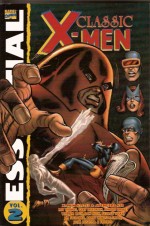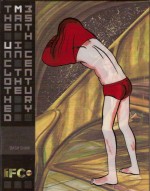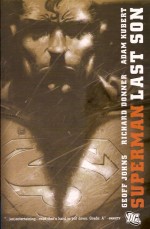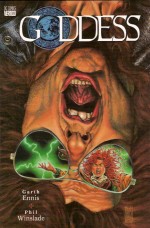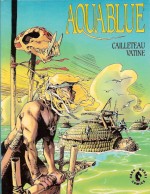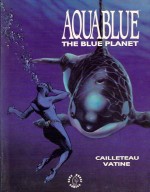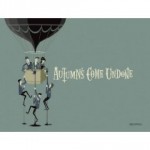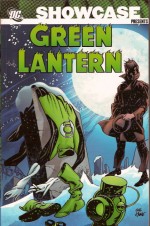
By John Broome, Gardner Fox, Dennis O’Neil, Gil Kane & various (DC Comics)
ISBN: 978-1-84856-322-3
Slightly slimmer than the usual phonebook-sized tome the fourth collection starring the Emerald Gladiator of Earth-1 (here reproducing in crisp, stylish black and white the contents of issues #60-75 of the groundbreaking comic book) is a kind of throat-clearing shuffle to allow a fifth volume to begin with the landmark O’Neil/Adams Green Lantern/Green Arrow tales, but that doesn’t by any means imply that the superb collection here is unworthy of your attentions.
By the time this selection of stories began DC was a company in transition – as indeed was America itself – with new ideas (for which, in comic-book terms read “new, young writersâ€) being given greater headway than ever before: an influx of new kids unseen since the very start of the industry, when excitable young artists and writers ran wild with imagination…
Green Lantern #60 (April 1968) was however an all-veteran outing as Gardner Fox, Gil Kane and Sid Greene introduced a fantastic new foe in ‘Spotlight on the Lamplighter!’, a power-packed, crime-busting morality play that foreshadowed a spectacular team-up classic in the next issue.
Mike Friedrich penned ‘Thoroughly Modern Mayhem!’ but mercifully the story was as wonderful as the title is not, since it cut to the quick of a problem many a kid had posited. If the power ring was so powerful why not just command it to banish all evil? When the old and weary Emerald Crusader of Earth-2 does just that, it takes both him and his Earth-1 counterpart to remedy the shocking consequences…
Issue #62 replaced Kane with Jack Sparling for Fox’s clever scientific mystery ‘Steal Small… Rob Big!’ and Denny O’Neil’s metaphysical, history-warping thriller ‘This is the Way… The World… Ends!’ in #63: whilst Mike Sekowsky and Joe Giella illustrated the O’Neil scripted ‘Death to Green Lantern’ wherein a long-forgotten foe almost destroyed the Green Guardian’s reputation before ending his life. Social historians might like to note the inclusion of benevolent and necessary (plus favourably depicted and written) hippies/flower children acting as more than mere comedic asides: Those times they really were a-changin’…
There was a return to straight superhero drama with Fox, Sekowsky and Giella’s doomsday thriller ‘Dry Up… and Die!’ which apparently ended the criminal career of Doctor Polaris whilst John Broome took GL back to the future for another planet-saving sci-fi romp in #66’s ‘5708 AD… A Nice Year to Visit – But I Wouldn’t Want to Live Then!’
Issue #67 featured two shorter tales, the first of which ‘Green Lantern Does his Ring Thing!’ was a delightful old-school conundrum as old enemy Bill Baggett wrested mental control of the ring away from the Emerald Gladiator (by Fox, Dick Dillin and Giella) whilst ‘The First Green Lantern!’ by Fox and Sid Greene revealed how the Corps began in the first (and only, I think) of a projected series: Tales of the Power Ring.
Contemporary space opera was the order of the day in the intriguing action thriller ‘I Wonder Where the Yellow Went!’ scripted by O’Neil and featuring the wonderfully welcome return of a rejuvenated Gil Kane, aided and abetted by Giella. Kane’s last efforts on the hero he visually created was to be a eye-pooping run of beautiful, dynamic classics, and none more so than the youth-rebellion parable ‘If Earth Fails the Test… it Means War!’, cleverly scripted by Broome and inked by the incomparable Wally Wood.
Vince Colletta inked the less impressive Broome/Kane space spoof ‘A Funny Thing Happened on the Way to Earth’, but honour and quality were restored with the tense countdown to disaster mystery ‘The City that Died!’ (Broome, Kane and Giella): one of two tales in #71, and one that reintroduced Olivia Reynolds – a love interest whose subconscious mind was a planet-shattering energy source. The second story was another jolly Jordan Brothers yarn, from Broome, Dillin and Murphy Anderson, but ‘Hip Jordan Makes the Scene!’ was a regrettably old-fashioned tale of a grifting hippie way out of tune with its readers’ sensibilities – and that’s a shame because it is quite funny…
‘Phantom of the Space Opera!’ by O’Neil, Kane and Giella is a visually magical but rather heavy-handed co-opting of Wagner’s Ring of the Nibelungs, transposed to deep space, but this was more than compensated for by the brilliant two-parter that followed.
‘From Space Ye Came…’ in Green Lantern #73 and its climactic conclusion ‘Lost in Space!’, by Mike Friedrich, Kane and Anderson was an unforgettable clash of ultimate enemies as Sinestro, the renegade Green Lantern, made a brutal attempt on our hero’s life using his foe’s unrequited love for Carol Ferris as a psychological wedge. However the alien mastermind was unaware of just how unstable Ferris was in her dual identity of the gem-possessed Star Sapphire…
With #76 Denny O’Neil would become sole scripter and in collaboration with comics genius Neal Adams completely redefined contemporary superhero strips with relevancy-driven stories. But to complete this book and the first chapter of Hal Jordan/Green Lantern’s chequered career comes the glorious swan-song ‘The Golden Obelisk of Qward!’ as the Emerald Crusader and a desperate doctor invaded the anti-matter universe to save Olivia Reynolds and destroy a weapon capable of demolishing our galaxy. Broome, Kane and Giella went out on a high note blending modern sensibilities with the plot-driven sense of wonder and high-octane action that made Green Lantern such an all-pervasive hit and the very foundation stone of DC mythology.
These tales of wit and courage, illustrated with astounding dynamism defined the Silver Age of comics and they are still as captivating and engrossing now as they ever were – perhaps even more so. If you love the sheer gloss and glamour of superhero fiction, then it never gets better than this…
© 1968, 1969, 1970, 2009 DC Comics. All Rights Reserved.



